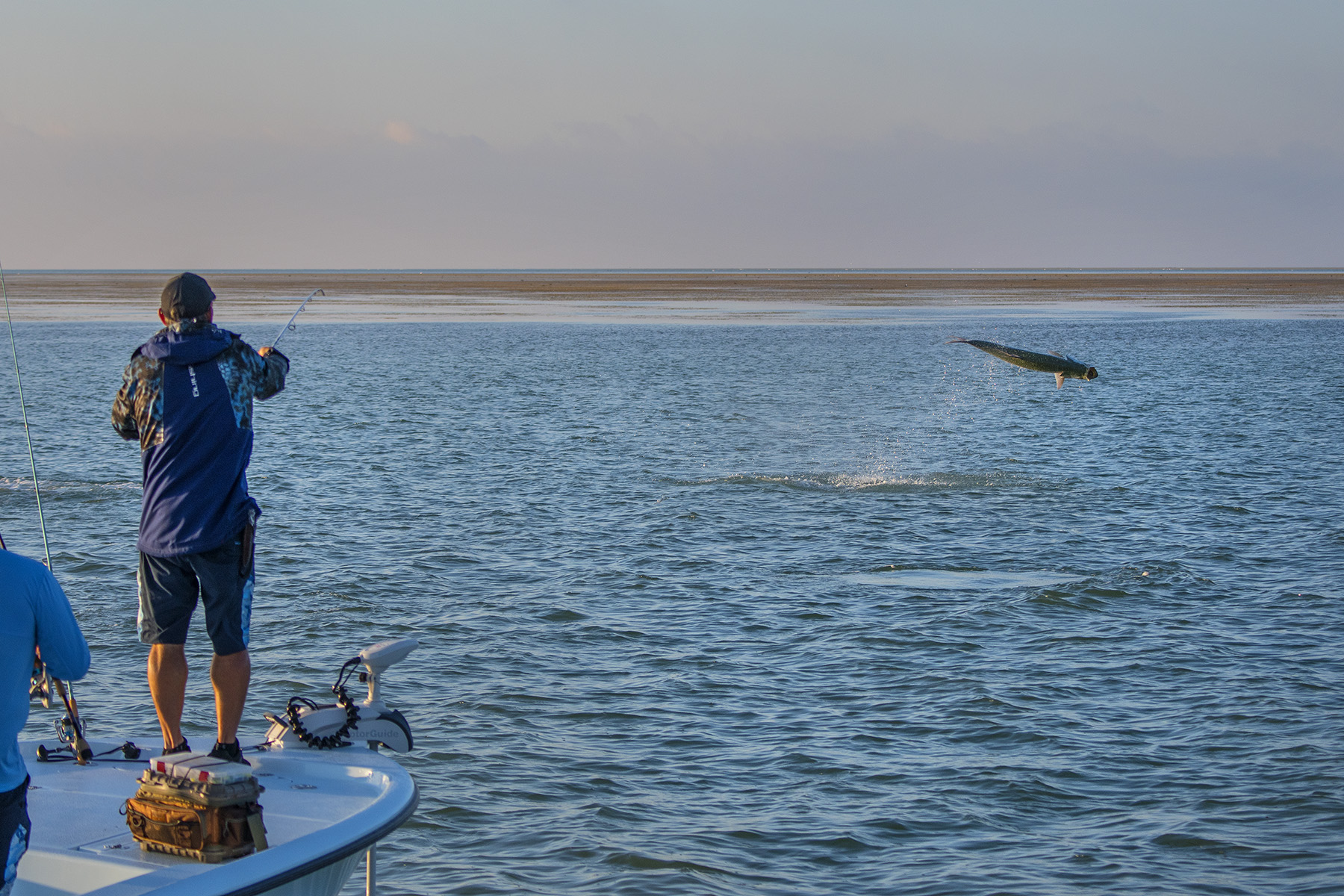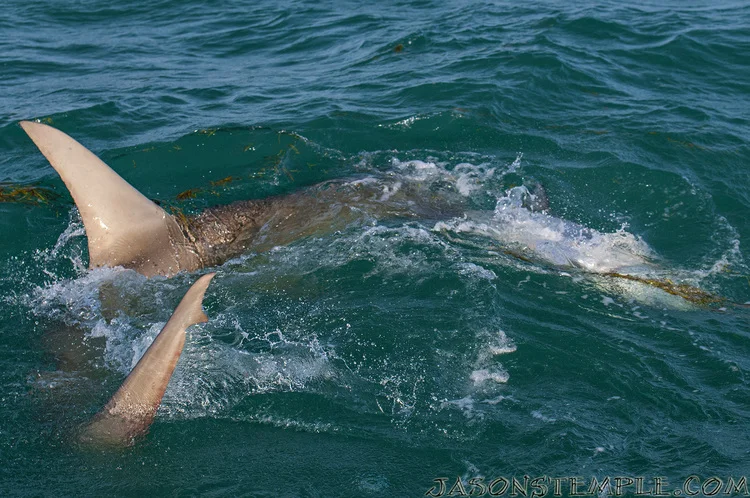
Tom Rowland bows to a big Tarpon in Sandy Key. Watch this episode now on Waypoint TV.
Question- Why Bow To A Tarpon?
Keith Rivera-
Why bow down when a tarpon jumps out of the water?
Answer-
Keith,
Thanks so much for your question. This is a good question that we get from time to time.
Tarpon are a fish that have a really hard mouth with the exception of a few key areas of softer tissue. Sometimes you get lucky and the hook finds a home in the softer tissue and there is probably no need for bowing when the tarpon jumps out of the water. However, no one is able to tell if the hook has found a good home until the fight is over and you actually reach in and take the hook out.

This Tarpon is showing how they accelerate when they hit the air. Watch this episode now on Waypoint TV.
Often, the hook has barely penetrated the bony, hard parts of the fish's mouth and a bow is necessary to keep the hook in their mouth.
The idea behind the bow is that the fish will accelerate as it leaves the dense water and hits the less dense air. Combined with the drag of the line in the water, especially fly lines, the hook can pull out easily. Anglers learned long ago that a bow at the right time would throw enough slack in the line to keep the hook set in the tarpon through the jumps. It worked really well and those anglers who were using this technique were landing far more fish. As with anything, the word gets around pretty quickly and soon the technique became commonplace.

A bow comes in many forms. Here I am dropping the rod with a light drag to give the fish some slack in the line. Many people will do an exaggerated bow at the waist and shove the rod forward like a spear. Watch this episode on Waypoint TV.
20 years ago, our hooks had to be sharpened with a file and even with the most skilled hand, the hook was not as sharp as most chemically sharpened hooks that anyone can buy today. The hooks were also made from much heavier gauge wire making it even more difficult to set the hook. Things have gotten better every year and I find that more and more hooks are penetrating the hard mouth of the tarpon resulting in a much higher percentage of tarpon landed versus 20 years ago.

Even the babies require a bow. Notice how tight the line is even when bowing. This is what can pull the hook from the fishes mouth. Watch this episode on Waypoint TV.
With the advantage of sharper hooks, you might think that the need for the bow might be less important today than it was 20 years ago. However, other technology has changed as well. Most tarpon fishermen that I know have welcomed the fluorocarbon material into their leader setup because of all the advantages it offers. While being thin, practically invisible and abrasion resistant, it also has a quality of extremely low stretch. Additionally, our fly rods and spinning rods have become better fighting tools by incorporating stiffer materials through the rod while leaving a softer tip for casting accuracy. The lack of stretch and stiffer rod makes the bow a valid technique today as well. Throwing slack by bowing as soon as the fish breaks the surface will help to keep the hook in place and land a few more fish.
I hope that helps!
Tom Rowland






























